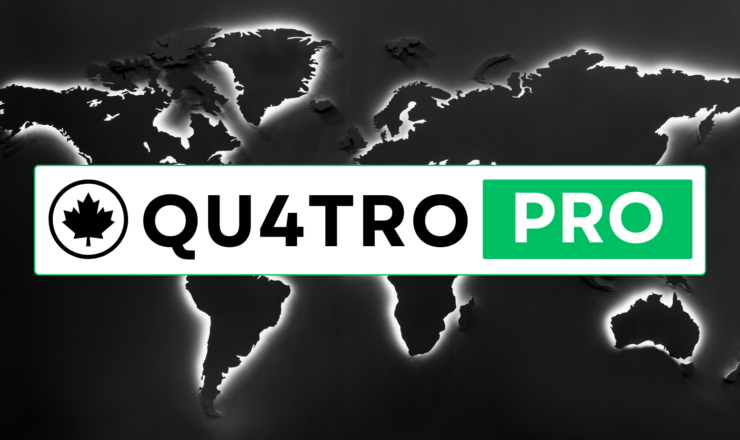Read Industry Insights
-
In the age of global protectionism, UK and India offer rare win for free trade
Britain and India have finalized a landmark free trade agreement during Indian Prime Minister Narendra Modi’s visit to the UK, marking a major step in bilateral relations between the world’s fifth and sixth largest economies.
The pact, completed after over three years of negotiations, aims to boost annual bilateral trade by £25.5 billion ($34 billion) by 2040, and comes at a pivotal moment of global realignment in trade policy, notably under the disruptive backdrop of renewed U.S. tariff measures under President Donald Trump.
July 25, 2025 -
China signals crackdown on overcapacity, igniting commodity market rally
Commodity prices in China have surged sharply this month, fueled by growing investor confidence that Beijing is finally taking concrete steps to rein in industrial overcapacity, a longstanding economic distortion with deep domestic and international consequences.
Prices for nine key industrial commodities, ranging from steel and coking coal to lithium carbonate and polysilicon, have climbed between 10% and 68%, outpacing the broader equity market as optimism spreads across sectors like steelmaking, solar manufacturing, and clean energy.
July 25, 2025 -
U.S. turns to mine waste in new push for mineral independence
The Biden-Trump transition in U.S. mineral policy has crystallized into one of the clearest examples of continuity in strategic industrial planning, and the latest move by the Interior Department under President Donald Trump’s administration further reinforces this trend.
On Thursday, the Department took a significant step by directing federal agencies to expand the recovery of critical minerals, such as rare earth elements, lithium, cobalt, and tellurium, from mine waste, tailings, coal refuse, and abandoned uranium sites.
July 25, 2025 -
EU–China ties enter cold phase as summit highlights strategic rifts
The latest EU-China summit in Beijing, intended to mark 50 years of diplomatic ties, underscored the deepening rift between the two major trading blocs, with only incremental progress made amid intensifying geopolitical and economic tensions.
While European Commission President Ursula von der Leyen and Chinese President Xi Jinping presented a carefully calibrated show of diplomatic engagement, the outcome suggests that structural tensions around trade imbalances, market access, industrial overcapacity, and geopolitical alignment remain unresolved and worsening.
July 25, 2025 -
Nuclear’s rebound faces rising risks and geopolitical fractures
After decades of stagnation and retreat, nuclear power is undergoing a cautious but meaningful global revival. Once a central pillar of industrial modernity, the atom’s share of global electricity generation has fallen from 18% in the mid-1990s to just 9% today.
But with intensifying climate pressures, surging electricity demand from AI and data centers, and rising anxiety over energy security in a fragmented world, nuclear energy is again being viewed through a strategic lens, not just as a low-carbon solution, but as a lever of industrial sovereignty and geopolitical resilience.
July 25, 2025 -
Trump’s copper tariff reshapes global trade in strategic commodities
President Donald Trump’s shock decision to impose a 50% import tariff on copper, effective August 1, has thrown the global copper market into turmoil, not just because of the unexpected severity and immediacy of the measure, but also because of its broader implications for global trade patterns, U.S. industrial strategy, and the politicization of commodities in a new era of economic nationalism.
While financial markets are reacting sharply, with CME copper futures surging to record highs, the strategic, geopolitical, and industrial consequences of this tariff decision go far deeper than simple price moves.
July 25, 2025 -
Relief rally obscures the reality of entrenched trade barriers
The rally in global stock markets this week, led by the S&P 500, Britain’s FTSE 100, and the MSCI All Country World Index, reflects a burst of optimism sparked by signs that the U.S. under President Donald Trump is nearing key trade deals—particularly with Japan and the European Union. Yet beneath the bullish sentiment, there’s a paradox at play: while markets cheer the de-escalation of Trump’s tariff threats, the world economy is still headed into a structurally higher trade barrier environment.
The positive market reaction stems largely from relief that Trump’s threatened tariff rates—originally as high as 25%—will likely land closer to 15%, as in the case of Japanese goods and, reportedly, a forthcoming EU agreement. This figure is now seen as the de facto baseline for U.S. trade policy across strategic economies, including a possible deal with China.
July 25, 2025 -
U.S. recalibrates Venezuela sanctions as oil diplomacy returns
The United States is preparing to reinstate oil-related authorizations for key partners of Venezuela’s state oil company PDVSA, starting with Chevron, in a move that signals a strategic recalibration of Washington’s sanctions policy toward the country. If enacted, these licenses would allow select energy companies to resume limited operations and oil swaps with PDVSA, while still attempting to prevent any direct financial benefit to President Nicolás Maduro’s government.
This marks a notable shift from President Donald Trump’s earlier decision this year to cancel Chevron’s license and halt all sanctioned oil transactions by late May, a policy aimed at tightening pressure on the Venezuelan regime. Now, however, officials appear to be weighing the geopolitical utility of narrowly tailored energy cooperation against the blunt force of full economic isolation.
July 25, 2025
Couldn't see what your are looking for?
Type any keywords to search our insights database.
Also use regional and sectoral filters in the top menu bar.
Explore Our Services
Get Top Insights Today

Our exclusive newsletter Top Insights Today delivers the latest insights straight to your inbox
You will get daily industry insights on
Oil & Gas, Rare Earths & Commodities, Mining & Metals, EVs & Battery Technology, ESG & Renewable Energy, AI & Semiconductors, Aerospace & Defense, Sanctions & Regulation, Business & Politics.












